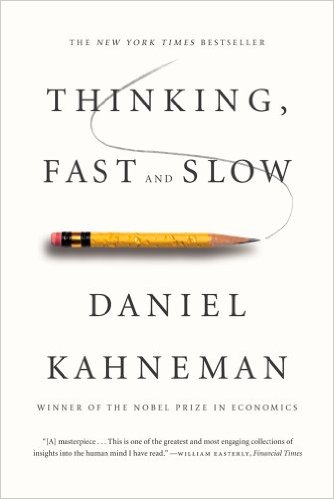Theories abound in the business world!
 I have found the “peak-end” rule to be the most applicable to my work career. After reading Daniel Kahneman’s work, I will now design my training session so that they have a memorable peak and an impactful ending for my employers, colleagues and coachees. The peak-end rule says that people judge their experiences almost entirely by the “peak” or most powerful moment in an experience, and how they ended. Once we have experienced an event, our future choices are based on what we remember about these past experiences – our remembered utility. Therefore, in order to truly get what we want, our expected utility has to align with our experienced utility, and our experienced utility has to be faithfully remembered in our remembered utility. Unfortunately, these three utilities rarely align. And these usual misalignments cause us to have unfaithful, misguided and less satisfying decisions and choices (Schwartz, 2004).
I have found the “peak-end” rule to be the most applicable to my work career. After reading Daniel Kahneman’s work, I will now design my training session so that they have a memorable peak and an impactful ending for my employers, colleagues and coachees. The peak-end rule says that people judge their experiences almost entirely by the “peak” or most powerful moment in an experience, and how they ended. Once we have experienced an event, our future choices are based on what we remember about these past experiences – our remembered utility. Therefore, in order to truly get what we want, our expected utility has to align with our experienced utility, and our experienced utility has to be faithfully remembered in our remembered utility. Unfortunately, these three utilities rarely align. And these usual misalignments cause us to have unfaithful, misguided and less satisfying decisions and choices (Schwartz, 2004).
In one famous experiment, two groups of people were subjected to a colonoscopy and were required to note the levels of pain at certain intervals. In the first group, the colonoscopy ended at a high level of pain. In the second group, the doctor left the instrument motionless for an extra few minutes and thus ended on a lower level of pain. This second group rated the experience as less unpleasant than the first group, and was also more likely to return to have their colonoscopy at their next scheduled time.
Applying this to my work, I see that choosing a powerful ‘peak’ in the middle of the session ensures that there is some variety to the training. Designers want to make everything impactful, which tends to ensure that nothing stands out. If I am designing a program, I might also choose a powerful speaker to be in the middle of the day or session. I will make a positive comment, piece of feedback or exercise in the middle of a coaching session or training program. In addition, I will make a point to compliment my colleagues on their work at the middle and end of training program. Having them leave with positive emotion ensures that this is the memory they take away from the session after having worked with me.
I usually avoid strong endings because I find them forced or uncomfortable. I tend to end telling participants about the evaluation form and thanking them. Then they trickle out the door. Looking back, this is an ineffectual way to end a training session. Going forward I will design training sessions so that I either save the best exercise for the end or I have each participant declare one thing they learned from the session that they will take away. This makes it more likely that they will remember the training and use it in their daily lives. I will also try to have participants fill out evaluations before the last minute. This will also ensure that we receive thoughtful feedback.
What will YOU do to end your meetings and presentations with a bang instead of a whimper?
References
Kahneman, D. (2003). A Perspective on Judgment and Choice: Mapping bounded reality. American Psychologist, 55, 9: 697-720.
Schwartz, B. (2004). The Paradox of Choice: Why More is Less. Harpers Collins Publishers: New York.
